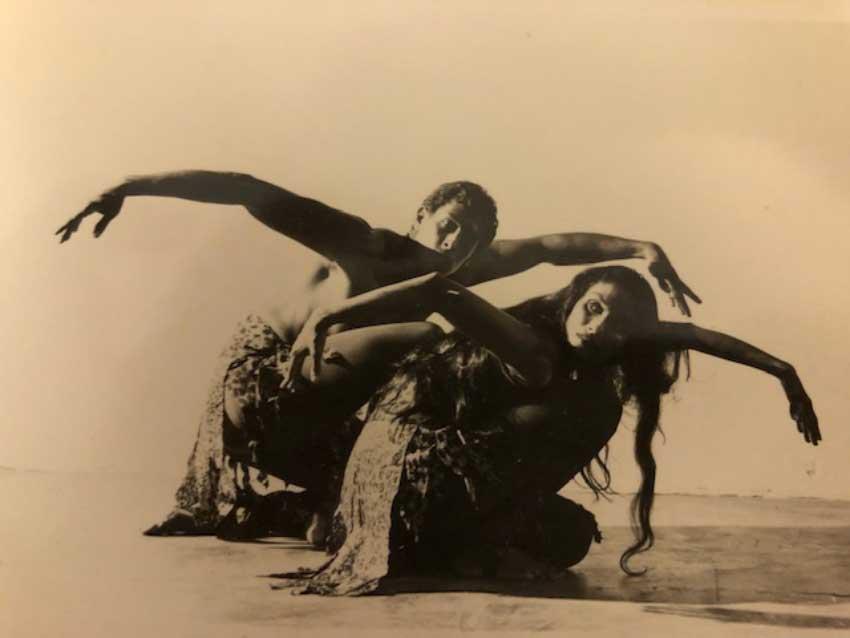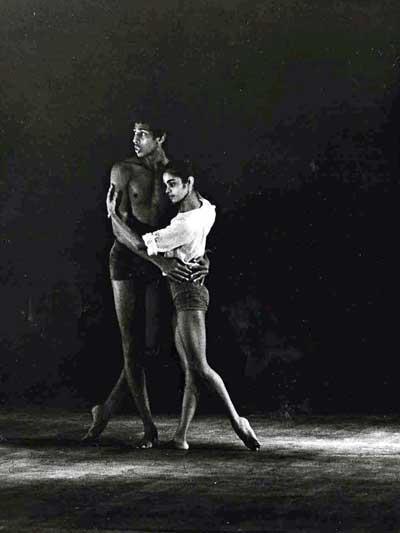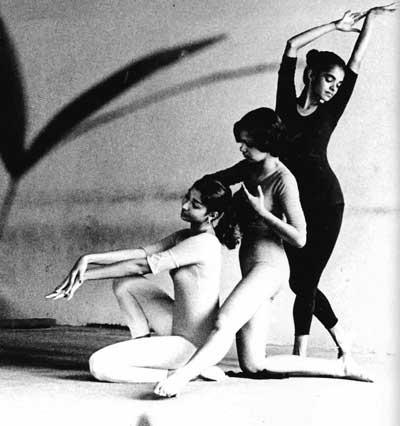Reply To:
Name - Reply Comment
Last Updated : 2024-04-27 00:40:00

 Dance is a unique and difficult choice for a career. Only a hardened few reach the heights they aim for and even when that target is reached, any dancer’s time in the glow of the spotlight is all too fleeting. Once a dancer loses his or her ability to perform to their maximum potential, the door that opens most welcomingly is the one that beckons them to impart their treasured experience to a generation of eager students who have dreams of making a career in dance. Thus, the cycle continues, and knowledge is passed on. The teaching (and learning) of dance requires strict discipline along with physical stamina, musicality and the mental ability to cope with stage fright. Only a few have the ability to impart this knowledge without reservation. Most teachers that I have encountered in Sri Lanka set boundaries by which they control their students. Students are encouraged to excel within a particular set of guidelines as long as they don’t stray and eat of the forbidden fruit. If they even dare to taste of that apple which is from another’s (teachers) garden, you can be sure that they will be shamed and cast out. Out of the paradise that is entirely a fictitious creation of that teacher’s mind. This form of psychological entrapment is entrenched in schools of dance in Sri Lanka making students who venture out feel as if they are betraying some sacred trust.
Dance is a unique and difficult choice for a career. Only a hardened few reach the heights they aim for and even when that target is reached, any dancer’s time in the glow of the spotlight is all too fleeting. Once a dancer loses his or her ability to perform to their maximum potential, the door that opens most welcomingly is the one that beckons them to impart their treasured experience to a generation of eager students who have dreams of making a career in dance. Thus, the cycle continues, and knowledge is passed on. The teaching (and learning) of dance requires strict discipline along with physical stamina, musicality and the mental ability to cope with stage fright. Only a few have the ability to impart this knowledge without reservation. Most teachers that I have encountered in Sri Lanka set boundaries by which they control their students. Students are encouraged to excel within a particular set of guidelines as long as they don’t stray and eat of the forbidden fruit. If they even dare to taste of that apple which is from another’s (teachers) garden, you can be sure that they will be shamed and cast out. Out of the paradise that is entirely a fictitious creation of that teacher’s mind. This form of psychological entrapment is entrenched in schools of dance in Sri Lanka making students who venture out feel as if they are betraying some sacred trust.
 Our island which has always been under the shadow of India has naturally adopted their ancient guru-shishya method of teaching. A guru (meaning dispeller of darkness) is meant to lead the shishya (the student) into the light. In the traditional Hindu context ‘darkness’ is interpreted as ignorance. Thus, to achieve ‘knowledge’ a student has to unquestioningly accept everything that their teachers say. Obedience is considered a virtue that is of paramount importance enabling teachers to guide their students towards the ‘light.’ My generation learnt to dance adhering to these strict guidelines. It was only when we broke out of the confines of those imposed barriers that we began to feel confident enough to blaze our own trails. One has to have a rebellious spirit to be able to seek freedom. Thank God, I did.
Our island which has always been under the shadow of India has naturally adopted their ancient guru-shishya method of teaching. A guru (meaning dispeller of darkness) is meant to lead the shishya (the student) into the light. In the traditional Hindu context ‘darkness’ is interpreted as ignorance. Thus, to achieve ‘knowledge’ a student has to unquestioningly accept everything that their teachers say. Obedience is considered a virtue that is of paramount importance enabling teachers to guide their students towards the ‘light.’ My generation learnt to dance adhering to these strict guidelines. It was only when we broke out of the confines of those imposed barriers that we began to feel confident enough to blaze our own trails. One has to have a rebellious spirit to be able to seek freedom. Thank God, I did.
It was extremely difficult to stand up to the predominantly chauvinistic culture that I grew up in and admit that I was a ballet dancer! it was even worse to confess that I was learning traditional dance too! At a time when society had a very narrow view regarding male dancers, teachers did little to boost a dancer’s confidence. It was only after I joined the Laban Centre that I shed my fear of teachers and had the confidence to question something they had said or to argue my decision regarding a piece of choreography that I was working on. It was here that I encountered teachers who rewarded you by saying, “I have learnt something from you.” It is only then that you realize that he or she has done their very best and opened the window that releases you.  Khema, is one of those free spirits who broke loose and spread her wings, dazzling all those who watched her perform. It was by partnering her that Channa Wijewardene, Mohan Sudusinghe and I, gathered the confidence to move is the directions that we have followed ever since. We danced abiding by our individual training and styles, but whenever we were faced by a challenge during our collaboration(s), we never felt intimidated by it. Breaking through those barriers in our techniques was imperative and that was what made our partnerships work.
Khema, is one of those free spirits who broke loose and spread her wings, dazzling all those who watched her perform. It was by partnering her that Channa Wijewardene, Mohan Sudusinghe and I, gathered the confidence to move is the directions that we have followed ever since. We danced abiding by our individual training and styles, but whenever we were faced by a challenge during our collaboration(s), we never felt intimidated by it. Breaking through those barriers in our techniques was imperative and that was what made our partnerships work.
In 1979, my childhood friend and dance partner Indira Gunesekera had returned to Sri Lanka after studying at the Royal Ballet School. She formed the Contemporary Dance Company which I joined along with many other dancers who were footloose at that time. This was the first contemporary dance company in Sri Lanka. Here was a collective experiment in dance that gave fruition to many artists who are well-known in our country today. Naomi Rajaratnam, Channa Wijewardene, Peter de Almeida, Indira Jonklass, Jerome de Silva (not forgetting the late Richard de Zoysa and Ravi John) et al, were ably supported by the likes of the Graham Hatch, Chrysanthi Fernandopulle and Chris Herft culminating in a perfect Gesamtkunstwerk. This was one great example of dancers and artist who were working towards one goal, untrammelled by restrictions and not afraid of failing, always daring to dream and hoping to create something worthwhile in the process. We were confronted with fierce opposition by some and great encouragement by others. Critics were paid to write scathing reviews about us by the very people who taught us to dance. This was when we realized that kicking down those mythical walls was the only way we were going to stand up and be recognised as the artists we hoped to become.

There are many dancers trapped in this awfully sad situation today. Artists who are (at the prime of their performing lives) kept under strict confines supposedly to preserve a legacy! This restriction is imposed under the guise of safeguarding a tradition or worse still, maintaining a heritage! To dance is to use one’s body to express an emotion, it is not confined to a tradition, owned by a culture or caught up within a technique and it certainly does not pass down a bloodline. To give you an example, in 1979, the Paris Opera Ballet arrived in Colombo and performed at the BMICH. The dancers of this company that was led by Carolyn Carlson were exceptional and totally in command of their bodies. As it was the custom, they were invited to a school of Kandyan dance so that they could watch some traditional dancers perform. Before this demonstration began, they were given the usual spiel about how ‘our’ dance forms are passed down from generation to generation, how it takes almost an entire lifetime to master its intricacies, how difficult it is to completely know ‘our dance traditions,’ etc. When this lecture finished, they witnessed the usual honouring (as befits the guru-shishya system) where all the dancers went about worshipping their teachers and drummers. After all that palaver, a ‘vannama’ was performed for the visitors.
Soon after the demonstration finished, a cordial invitation was made to the visiting dancers to try out some of the traditional choreography to which they enthusiastically agreed. To cut a long story short, the visiting dancers learnt and performed the ‘vannama’ they had seen a few minutes ago with such astute professionalism and clarity, that the entire myth about requiring a lifetime to learn ‘our’ tradition was blown to pieces in front of us. Such is the crap that is fed to students by selfish teachers driving students to failure even before they have begun. The darkness is never dispelled. This is how a guru strives to remain the alpha and the omega. There are teachers who claim that students who follows the Royal Ballet exams aren’t allowed to participate in any other type of dance activity other than ballet itself. This is utter rubbish! If one becomes a professional dancer and signs up as a member of a company, then and then only is it that you may not be allowed to dance with any other choreographer or company until you are released from that contract. But whilst you are a student, you can (and should) learn any other dance form, as it will only enhance your technical capabilities.

During the 60’s and the 70’s several dancers defected from the Soviet Union in search of artistic freedom. The world witnessed the stupendous results of these defections which resulted in the free mingling of dancers and choreographers who hail from various traditions (albeit from varied approaches to the teaching and performing of Classical Ballet). Nureyev with Fonteyn and Frederic Ashton, Baryshnikov with Mark Morris and Twyla Tharp, Mukemedov with Kenneth McMillian and Kim Brandstrup and Makarova with Ivan Nagy and the American Ballet Theatre gave us an age of progress in dance that remains unparalleled. All of them collaborated with renown choreographers such as Balanchine, Robbins, Graham and Cunningham, reinterpreting their great works, shedding new light and discovering new ways of dancing them. Even after having achieved their superstar status these dancers strived to learn more and to become better and more adaptable artists, knowing all too well that the original school that they belonged to had nothing more to teach them. Most of the dancers who defected have been invited back to teach as well as perform. Those closed and secretive teaching techniques are now being exchanged widely with other dance schools of the world ensuring that the great reputations of companies such as the Bolshoi and the Kirov are maintained. Their star dancers are free to go wherever they please and partner whom they like. Freedom has created a renewed strength in the world of ballet. Without collaboration and the constant exchange of ideas and new teaching techniques, dance companies tend to lose their lustre.
Examining the recent history of dance in our small island, I can only sigh and observe that we have reached a point of homeostasis. Our great dance companies have dwindled to a handful of dancers struggling to even get a chance to perform. At best, we seem to be a divertissement that props up the cultural exhibitionism of our powerful neighbour. We had so much promise and hope and yet all we have now are rivalries, jealousies, factions, bitterness. Some dancers who have the potential to become international stars are trapped like birds in a cage. The Cloud Gate Dance Company of Taiwan, which is now internationally famous started as a very small company too. Their success is down to the fact that their dancers practice and perform using such diverse movement disciplines and artistic approaches as T’ai chi, meditation, martial arts, modern dance and ballet. Its artistic director Lin Hwai-min drew his inspiration from the time he spent working with dancers in India, Indonesia and New York and brought each of these influences to reflect in his choreography. This is the sort of example that we should follow and build on.
The only way a dance company can ensure their continuing success is by letting their teachers and students venture out. If they have the freedom to go and learn something different, they will bring back a wealth of new knowledge which can only strengthen a company. Dancers should be taught how to use their wings and then given the freedom so that they can fly.

Add comment
Comments will be edited (grammar, spelling and slang) and authorized at the discretion of Daily Mirror online. The website also has the right not to publish selected comments.
Reply To:
Name - Reply Comment
US authorities are currently reviewing the manifest of every cargo aboard MV
On March 26, a couple arriving from Thailand was arrested with 88 live animal
According to villagers from Naula-Moragolla out of 105 families 80 can afford
Is the situation in Sri Lanka so grim that locals harbour hope that they coul

7 hours ago
8 hours ago